
Key Takeaways
Lower back pain is a common issue among many in Singapore, often caused by long hours at the desk, poor posture, or a lack of regular movement.
We’ve put together a 15-minute routine that includes 8 effective stretches and yoga poses. These moves are specially chosen to relieve tension in the lower back, boost flexibility, improve posture, and support long-term spinal health.
Want to start feeling the difference? Check out our guide for step-by-step instructions on each stretch and lifestyle tips to help you keep your lower back strong and pain-free.
1. Child's Pose
How to Do It
- Start on your hands and knees.
- Slowly shift your hips back to sit on your heels. You can keep your knees together or spread them apart slightly—go with what feels best.
- Extend your arms forward on the floor, palms facing down, and lower your torso between or onto your thighs.
- Let your forehead rest on the mat. If that’s uncomfortable, place a cushion or folded towel beneath it for support.
- Hold this pose for 30 seconds to a few minutes, breathing deeply.
To come out of the stretch, press into your palms and gently rise back up to a kneeling position.

Safety and Comfort Tips:
- Rest arms by your sides, palms up, for a gentler variation. Keep neck, jaw, and shoulders relaxed throughout.
- Use a towel or blanket under the knees for extra support.
- Avoid this stretch right after eating.
2. Knee to Chest
How to Do It
- Lie flat on your back with legs extended and arms by your sides.
- Bring your right knee towards your chest.
- Hold your shin or kneecap and gently pull the knee closer in.
- Breathe deeply and hold for 30 seconds.
- Return to the starting position and switch legs.
Safety and Comfort Tips:
- Keep the other knee bent if that feels better. For a deeper stretch, hug both knees to your chest.
- Do not force the stretch—go only as far as is comfortable.
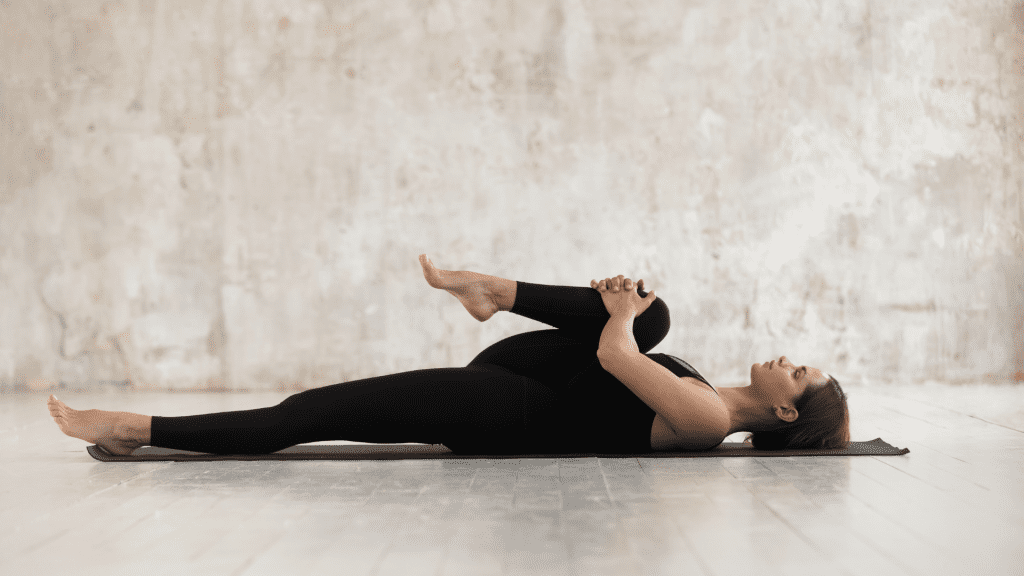
3. Pelvic Tilt Stretch
How to Do It
- Lie on your back, knees bent, feet flat.
- Tighten your core—draw your belly button towards your spine.
- Gently tilt your pelvis to press your lower back into the floor.
- Hold for 5–10 seconds, then release to a neutral spine.
Repeat as needed, moving with control.
Safety Tips:
- Keep feet flat—don’t lift your hips. Lifting your body will move you into our next stretch, which is the bridge stretch.
- Avoid over-arching your back on the release.
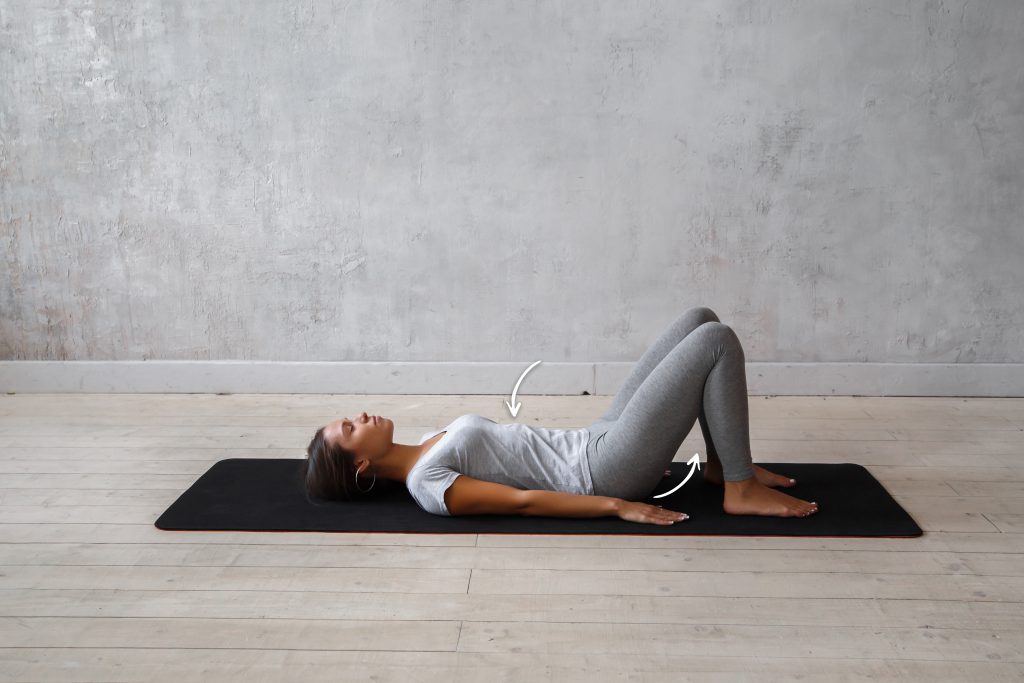
4. Bridge Stretch
How to Do It
- Lie on your back, knees bent, feet flat, arms by your sides.
- Engage your core and squeeze your glutes.
- Lift your hips until your knees, hips, and shoulders form a straight line.
- Hold for 15–30 seconds, then lower back down gently.
Safety and Comfort Tips:
- Don’t over-arch—keep your body in a straight line.
- Avoid letting your knees flare outward.
- Press your arms into the floor to deepen the stretch.
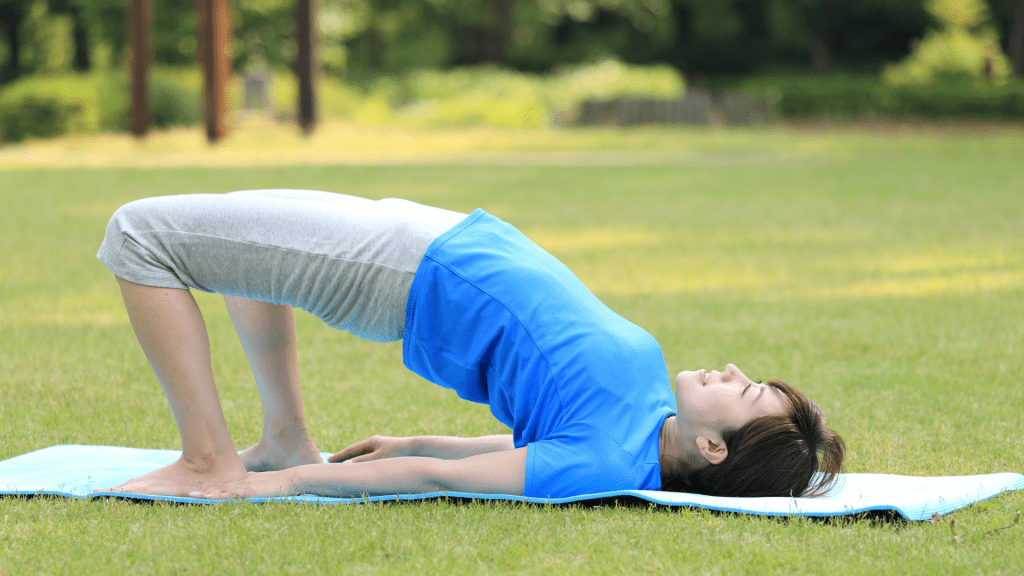
5. Cat-Cow Stretch
How to Do It
- Start on your hands and knees—wrists under shoulders, knees hip-width apart.
- Cow Pose: Inhale, drop your belly, lift your chest, and gaze upwards.
- Cat Pose: Exhale, round your back, tuck your chin, and press into your hands.
- Continue flowing slowly between both poses for several breaths.
Safety and Comfort Tips:
- Avoid straining your neck; do not force your chin to your chest in the cat pose.
- If your wrists hurt in this position, place your forearms on the floor, or on a stack of blankets or towels to raise your body off the ground.

6. Half Spinal Twist
How to Do It
- Sit tall with legs extended.
- Bend your right knee and place your right foot outside your left thigh.
- Place your right hand behind you for support.
- Bring your left elbow to the outside of your right knee.
- Inhale to lengthen your spine; exhale and twist to the right.
Hold for 15–30 seconds, then switch sides.
Comfort Tips:
- You can hug your knee instead of using your elbow for a gentler stretch.
- Look over your shoulder to deepen the twist.

7. Hip Flexor Stretch
How to Do It
- Start on your hands and knees.
- Slowly shift your hips back to sit on your heels. You can keep your knees together or spread them apart slightly—go with what feels best.
- Extend your arms forward on the floor, palms facing down, and lower your torso between or onto your thighs.
- Let your forehead rest on the mat. If that’s uncomfortable, place a cushion or folded towel beneath it for support.
- Hold this pose for 30 seconds to a few minutes, breathing deeply.
To come out of the stretch, press into your palms and gently rise back up to a kneeling position
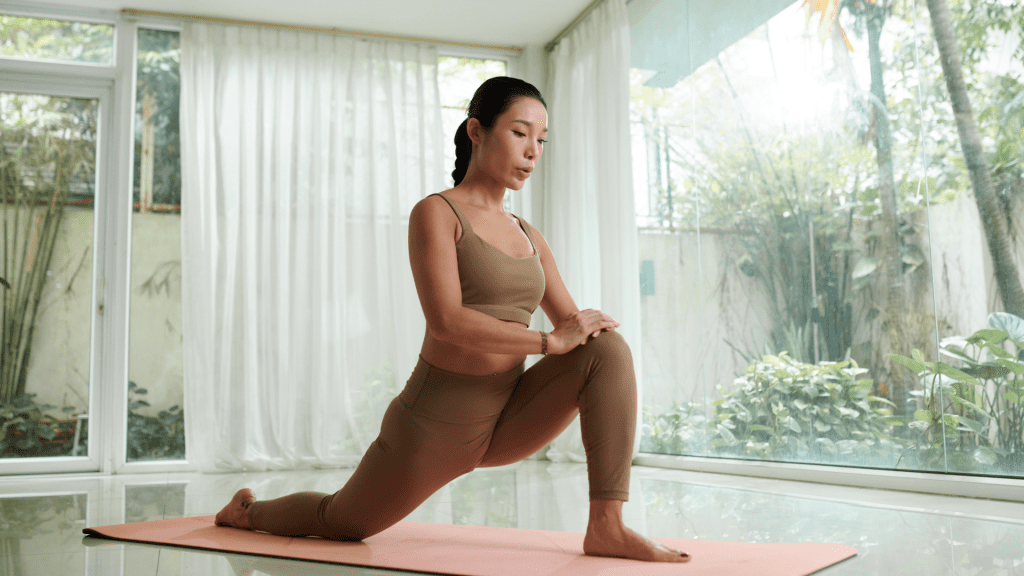
Safety Tip
- Keep front knee stacked over the ankle—don’t let it go past your toes.
- Raise your arms and lean back slightly or press arms into the floor to lift your chest slightly for a deeper stretch.
- Ease off if you feel strain in your lower back.
8. Legs up the wall pose
How to Do It
- Sit sideways next to a wall, hip close to it.
- Lie back and swing your legs up onto the wall.
- Adjust until your legs are resting vertically.
- Relax and hold the pose for a few minutes.
To exit, bend your knees and roll to one side. Rest before sitting up.
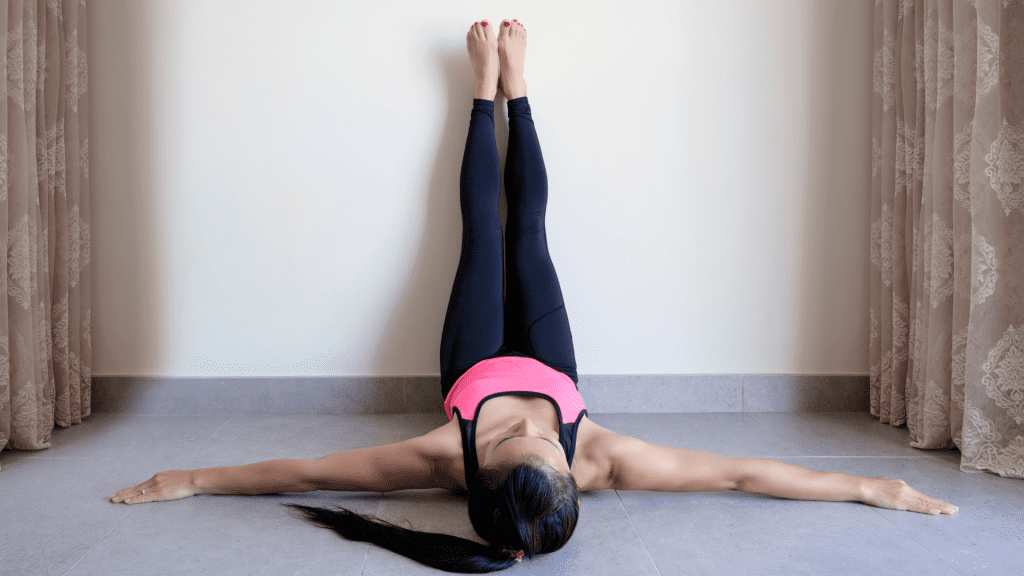
Safety Tips:
- Avoid this pose if you have glaucoma, high blood pressure, or spine issues—check with a doctor first.
- Use a cushion or blanket under your hips for support.
- Keep a slight bend in your knees if your hamstrings feel tight.
Lifestyle Recommendations
In addition to building a strong core and maintaining good posture, there are a number of smaller, but just as important, ways to prevent lower back pain. These include:
- Avoid prolonged sitting or standing, taking regular breaks
- Lift heavy objects properly in accordance with safety standards
- Stay active and maintain a healthy weight
- Sleep on a supportive mattress and use an appropriate pillow
- Wear appropriate and supportive footwear
- Manage stress that causes muscular tension
- Stay hydrated and avoid smoking
FAQs
Lower back stretches relieve tension and pain, reduce tightness, and improve overall flexibility. They can also prevent injuries related to poor lower back health.
The best stretches for relieving lower back pain include: child’s pose, knee-to-chest stretch, pelvic tilts, cat-cow poses, seated spinal twists, bridge exercises, hip flexor stretches and legs-up-the-wall.
Depending on your overall health and physical needs, you may wish to stretch daily. This routine recommended above only takes 15mins.
A good benchmark is 2-3 times per week, but always consult with your healthcare provider or doctor before starting any new exercise routine.





